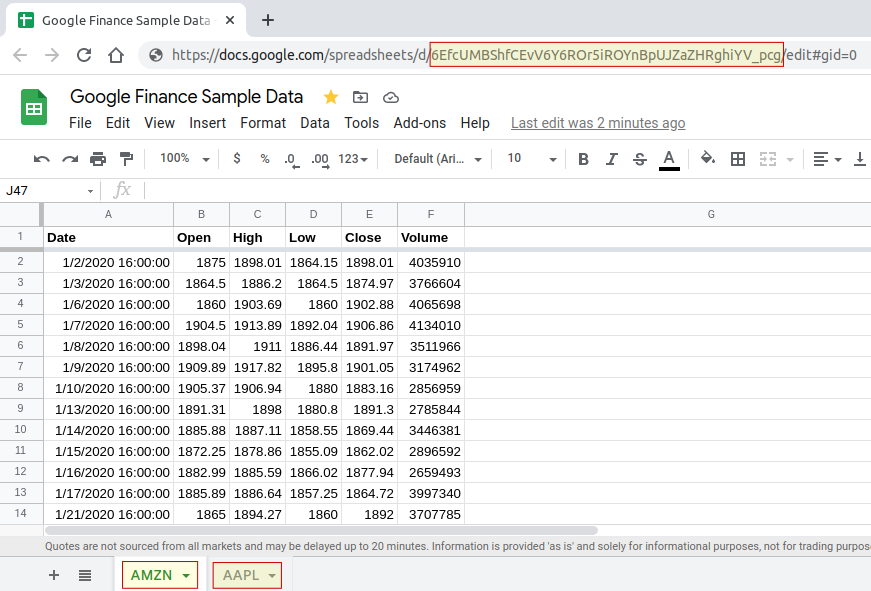Allow reading data from google sheets source and trigger a process to fill up a PostgreSQL database.
A google sheet with a defined structure must exist and be shared by link to be readable by this app.
Create any new google sheet and load stock data based on google analytics function.
Amazon stocks =googlefinance("AMZN","all", DATE(2020,1,1), DATE(2020,12,30), "DAILY")
Apple stocks =googlefinance("AAPL","all", DATE(2020,1,1), DATE(2020,12,30), "DAILY")
Fill tabs with the data you want and name them properly.
Note : Remind to grab the google-sheet-id, tab names and the range to capture.
Also share the sheet to anyone with the link to be able to read the data.
.env is used to define PostgreSQL target connection, db schema and google sheet scope to be parsed.
These are the supported environment variables:
- PG_HOST=[postgres host]
- PG_DB=[postgres db name]
- PG_USER=[postgres db username]
- PG_PWD=[postgres db password]
- PG_PORT=[postgres db port]
- PG_SCHEMA=[postgres db schema for temp data] #
gsheet_is added as a prefix to avoid app impact (drop happens before creation) - GOOGLE_SHEET_SRC=[source google sheet url with place holders - don't need to change]
- GOOGLE_SHEET_ID=[google sheet unique id] # highlighted in URL
- GOOGLE_SHEET_TABS=[google sheet tabs and column range to be captured]
Copy .env.example to .env and change accordingly.
Run docker-compose build --no-cache to generate docker image.
Trigger it with docker-compose run py-demo-load to run once, load data into postgres schema and stop the container.
Use python virtual environment (venv) for local development. Check existing global installation with virtualenv --version. If not installed, run the following pip install virtualenv.
Check pip location
which pip
pip list | wc -l
pip list
python --versionApply venv to the project
cd ~/path-to/my-project
python3 -m venv ./venv
source ./venv/bin/activateCheck local python and packages installation
which pip
pip list | wc -l
pip list
python --versionDeactivate venv
While in venv mode, type deactivate to exit from the virtual environment.
While venv is active, install individual packages with pip install <package> or from the listing as follows:
pip install -r requirements.txtCheck if all necessary packages are installed with pip list.
To generate a new requirement list, run pip freeze > requirements.txt.
